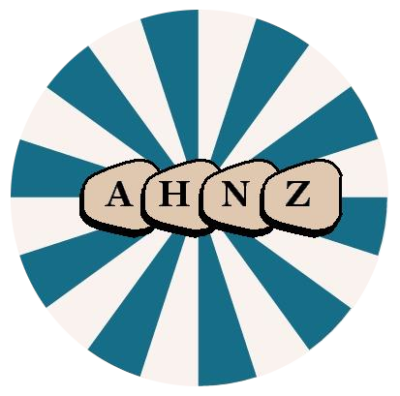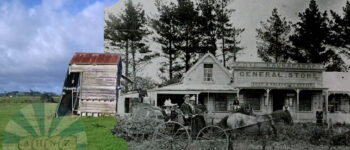1882: Dye’s Slaughterhouse
April 18, 2025
By AHNZ

Back in the 1860s and 1870s the way to get stock in and out of the district was by accessing the Kaipara Harbour. It was once a busy transport route. This old building was one of the last remains of a bygone age. The North Auckland Line chipped away at that, finally reaching Helensville in on 18 July 1881. Ref Poverty Bay Herald, Papers Past
Francis ‘Frank’ Dye (1847-1922) settled Kaukapakapa as teenage pioneer when his father migrated from England. Builder by trade, he became general storeman, kauri merchant, and Justice of the Peace. He also served in the Waikato during the Maori Wars.
In public life, Dye chaired the local Road Board and then the Waitemata County Council.
“Admirers of a historic Auckland slaughterhouse on the brink of collapse have begun work to save it. The Dye’s Slaughterhouse, in Kaukapakapa, has stood in a floodplain since about 1882….The slaughterhouse was used by Frank Dye as he imported stock from Helensville by rail and in his own boat up the Kaukapakapa River, from about 1882 until his death in 1922” – Stuff (2017)
“End of an era … the Kaukapakapa slaughterhouse is down…” – Helensville Community, Facebook (16/4/2025)
“Scaffold I put up lasted 8 years.” – Jason McCormack, ibid
“Kaukapakapa settlement was divided. On the south side of the river was Drinnan’s Hotel and store which had its supplies brought in by bullock team from Riverhead, and on the north side Frank Dye’s store which received its supplies by boat. Frank Dye also ran the butchery, a gum store and the post office while acting as a Justice of the Peace, a timber merchant, and organist at both churches. Gradually as the land was cleared farms with dairy cows and sheep were developed. The arrival of rail in 1889, and the establishment of a creamery alongside the railway station gave the dairy industry a great fillip.” – Helensville Museum (c.2005,) Wayback Machine
Frank Dye: General Storekeeper, Gum and Timber Merchant, Kaukapakapa….has for a number of years carried on a large trade in kauri gum and timber, sometimes shipping the former to London and the latter to Melbourne, Auckland, and other ports. In public matters he has taken a prominent part, having been for many years chairman of the Kaukapakapa Road Board and a member of the school committee. He gratuitously acts as organist for both the Wesleyan and Anglican churches, and has always proved a willing helper in any scheme for the benefit of the district.” – The Cyclopedia of New Zealand [Auckland Provincial District] (1902,) NZETC
In the second image, showing Dye’s store and post office, the slaughterhouse is visible on the far left. It was tall and skinny so animal carcasses could be strung from its roof.
—
Image ref. Composite image of Dye’s old site in Kaukapakapa 1900 photo with another from 2018
– Alan Jordan collection, Helensville Museum
– AHNZ (2018)
Image ref. View from west rather than from the road. AHNZ Archives (2018)
 Like Comment Share
Like Comment Share





